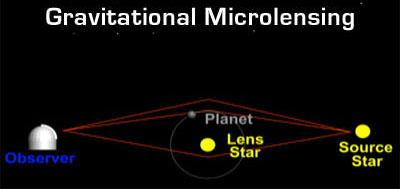 When a person thinks of a telescope, he may subconsciously attach other words to it, words like planets, the sky or the solar system. But even Hans Lippershey – the person associated with the invention of said device in 1608 – may not have been aware that the simple telescope can be taken into a different perspective. At almost the same time, Galileo made his own version: a telescope that can be used for astronomy, and the forerunner of the microlens was born.
When a person thinks of a telescope, he may subconsciously attach other words to it, words like planets, the sky or the solar system. But even Hans Lippershey – the person associated with the invention of said device in 1608 – may not have been aware that the simple telescope can be taken into a different perspective. At almost the same time, Galileo made his own version: a telescope that can be used for astronomy, and the forerunner of the microlens was born.
Microlensing is a technique used for seeing planets that are far away from the Earth. Using this method allows a person to discover stars, planets and other celestial bodies that are thousands of light-years away.
It is believed that every once in a while, massive dark objects in space would be able to traverse earth’s line of sight. In essence, you would be able to see this elusive object, whether it be a star or planet because it would get between our planet and a far-away luminous star. And if it does get near enough for us to see, a lensing effect would happen due to a sudden bright glow from the far-flung star – one that could magnify the mass. This brings about microlensing.
